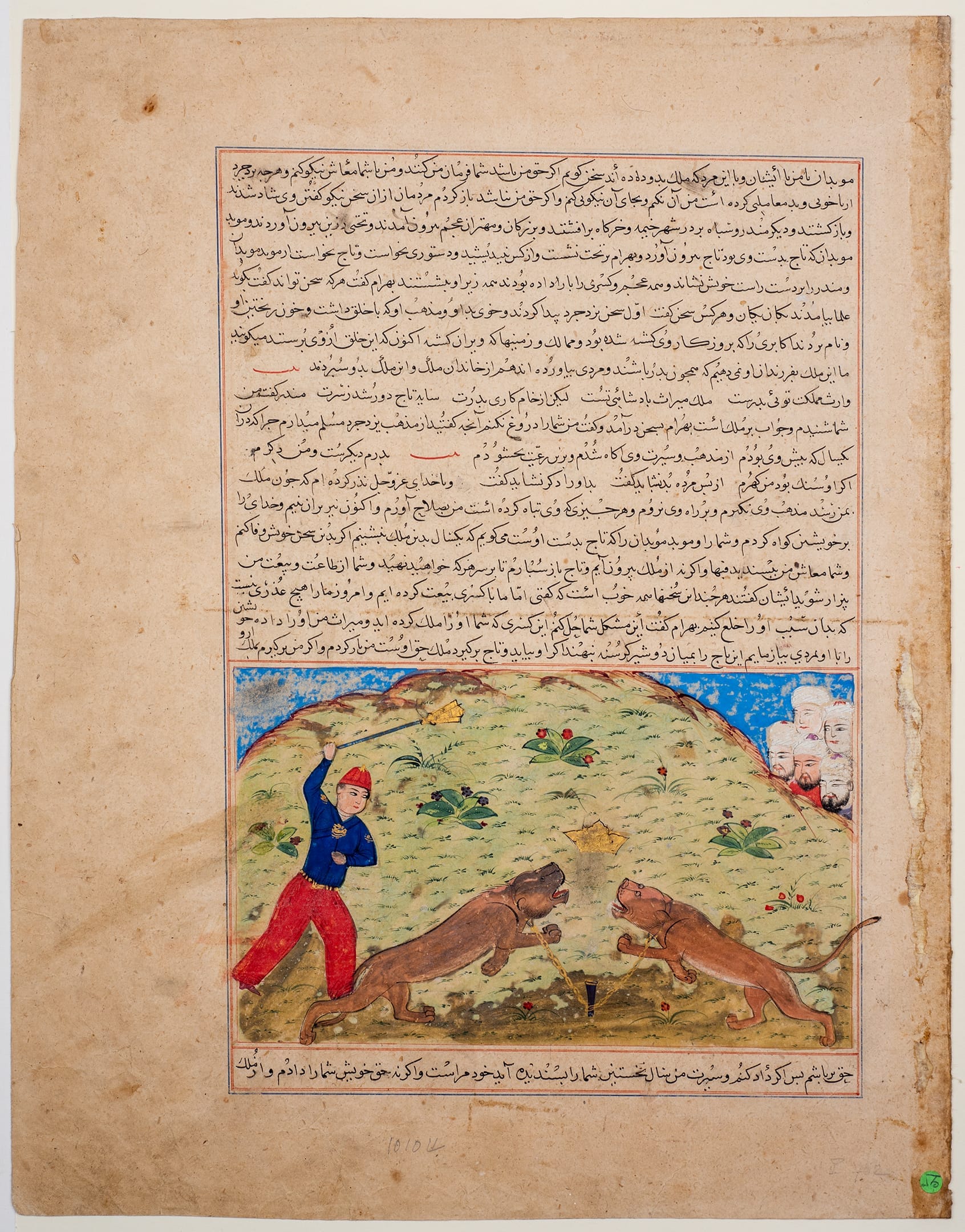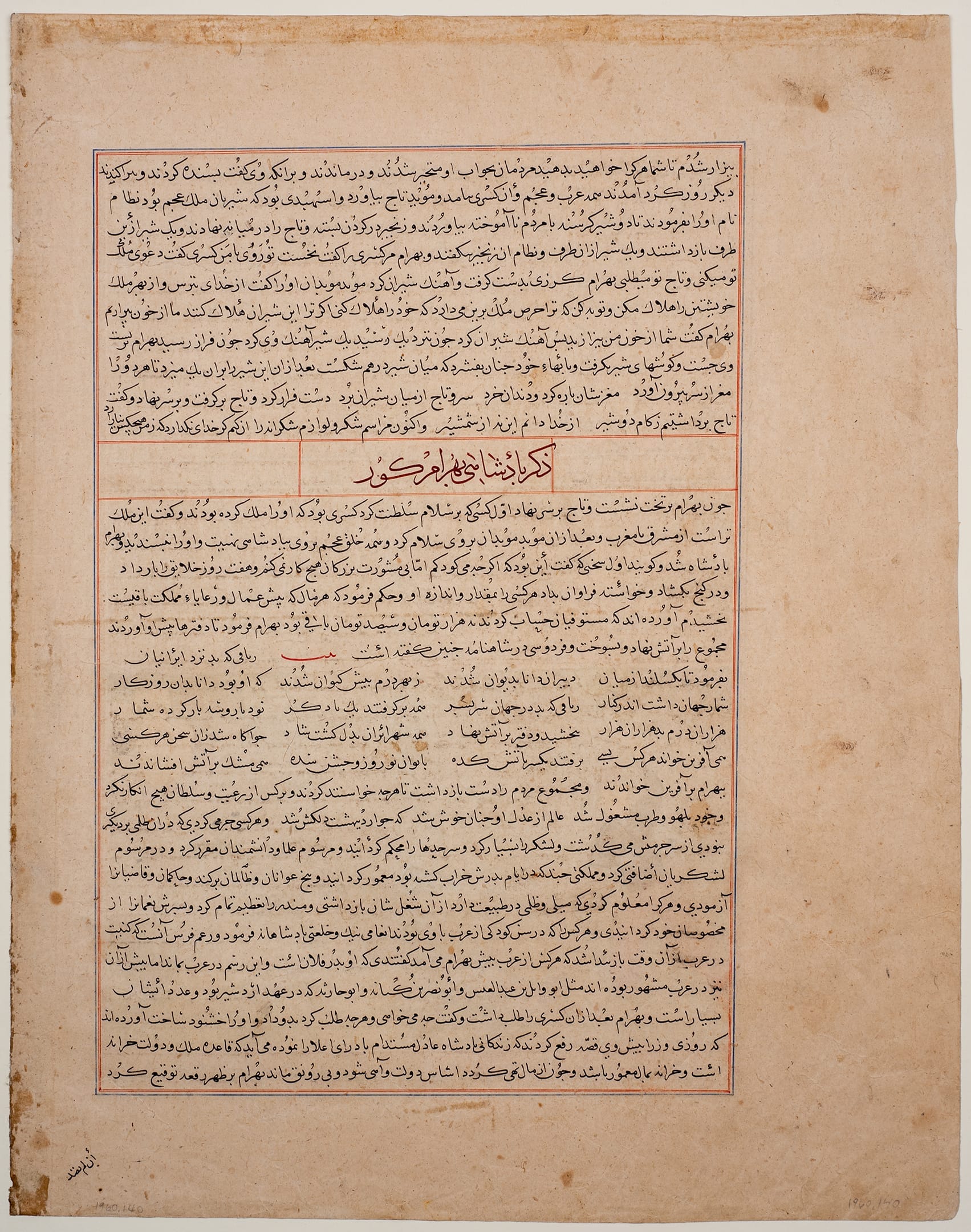


images@louvreabudhabi.ae
Bahram Gur Wins the Iranian Crown, from a Replacement Volume by Hafiz-i Abru to Rashid al-Din’s Jami‘ al-Tawarikh (recto)
| Date | production date: 1425 to 1430, Timurid Period (1370-1507 CE) |
Artwork Details
| Inventory Number | LAD 2020.124 |
| Geography | production place: Herat, Afghanistan |
| Category | miniature |
| Artistic Period | Medieval Art - Europe (476 - end of 15th century) |
| Material/Techniques | ink, gold and opaque pigments on paper |
| Dimensions | H x W: 42.8 x 33.7 cm (folio) H x W: 33.6 x 22.8 cm (painting) H x W: 33.6 x 22.8 cm (drawing) 56.7 x 44.3 x 3 cm (framed) 54 x 41.5 x 0.4 cm (mounting) |
| Owner | Louvre Abu Dhabi |
| Current Location | Not on display |